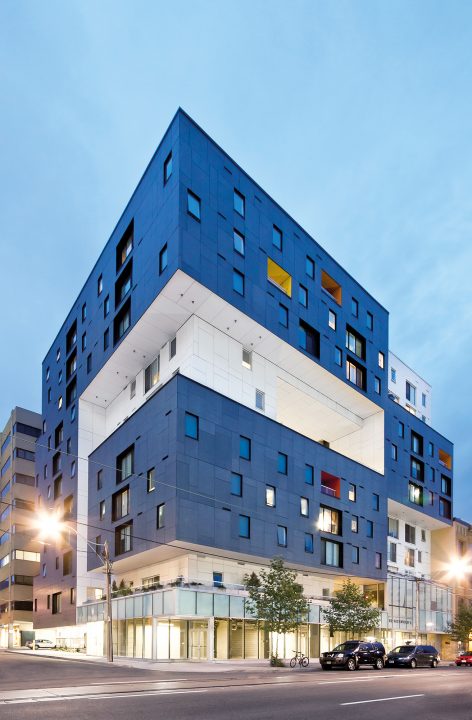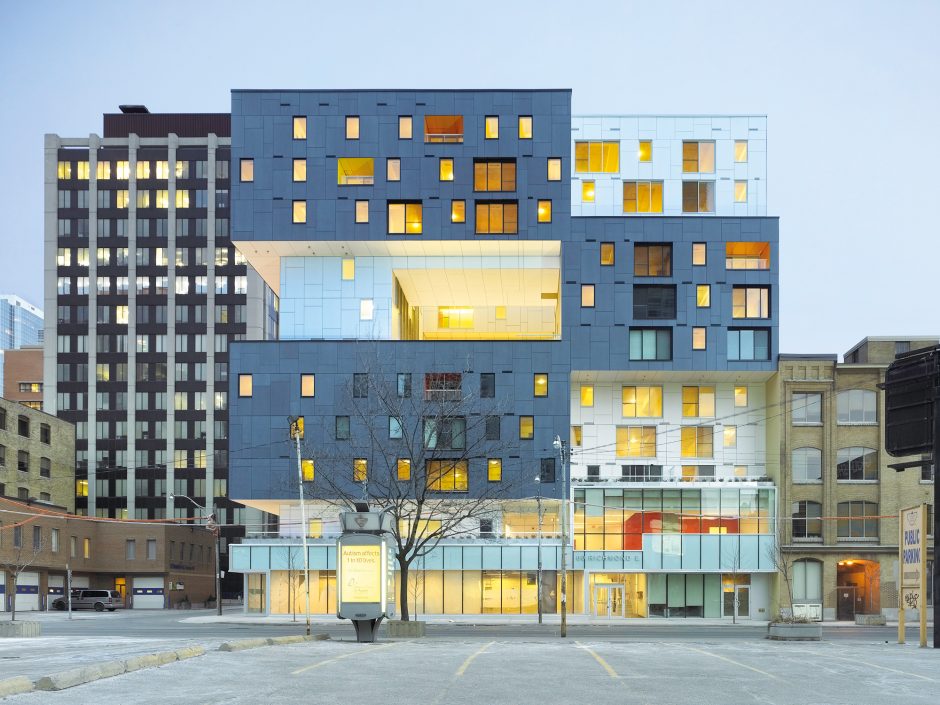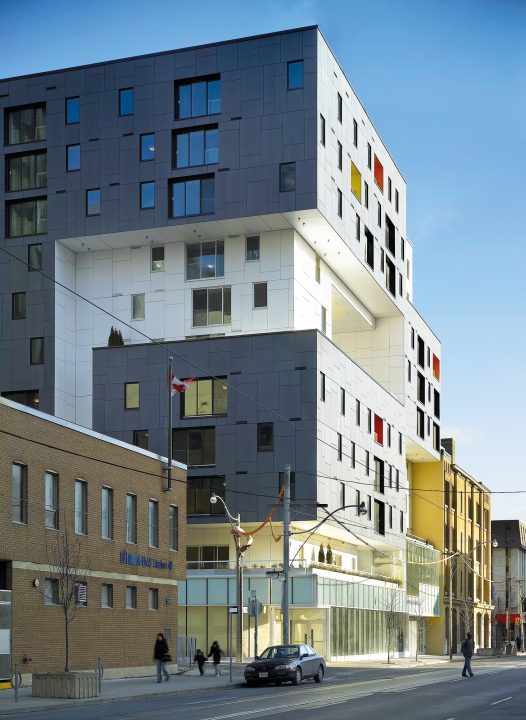Daily newspaper headlines beg for solutions to America’s affordable housing crisis. There are lots of valuable ideas, but few implementations that appear scalable. For example, there is a lot of talk about the concept of workforce housing, but very few concrete examples. Numerous definitions of workforce housing exist, with the most prevalent being that it serves working people earning 80-120% of median income, who pay no more than 30% of their income for rent.
Many major cities in North America are seeing a rise in homelessness and a vast shortage of affordable housing for extremely low, very low and low-income households (30-80% of median income). While just a drop in the bucket, federal and state programmes and subsidies are at least addressing some of the problems of supply. There is a similar and growing crisis in the supply of affordable housing for households earning between 80-120%. This segment of the population, however, is not eligible for subsidies or affordable housing and most often is paying far more than the 30% of income that the US Department of Housing and Urban Development (HUD) regards as normal.

People in this 80-120% segment are mostly destined to be renters-for-life – stuck overpaying for rents with a minuscule ability to save, they will never have the downpayment to own a home or pay a mortgage. Nor, most likely, will they be able to afford to live near their job. Affordable housing for this segment of our major cities is fast disappearing. Workforce housing targets this segment with words and policies, but, regretfully, with few real projects.
However, one group did do something about it. This is the story of 75 Housing Co-op – a workforce housing co-operative operating in the heart of one of the biggest cities in North America.

A meeting of minds in Toronto
Like other cities, Toronto, Canada, desperately needed targeted affordable housing to attract employees who are the moderate-income backbone of its urban economy.
At the start of our story, the City of Toronto had a vacant site at 60 E. Richmond Street; Toronto Community Housing (TCH) was fast losing social housing units downtown; the Cooperative Housing Federation of Toronto (CHFT) had seen no new co-op in 20 years; and Local 75 UNITE (the union of greater Toronto hospitality workers) had members traveling a long way to their downtown jobs.

The ingredients were there but there was not yet a cook. So how did a sensible, affordable home for the lowest-paid employees of Toronto’s downtown hotels and restaurants get built in the city’s business centre?
It was largely thanks to Toronto City Councillor Pam McConnell. McConnell had lived in co-op housing for 40 years (Spruce Court Co-op), had been at times a manager of housing co-ops and rose to become president of the Cooperative Housing Federation of Toronto. In 2017, the year she died prematurely, she was deputy mayor of Toronto. Cllr McConnell saw a unique alliance that would fulfil her co-operative vision to house low-income workers in downtown Toronto.
The alliance spent a few years looking for an outcome that was acceptable to all four groups above, and agreed the following actions: The City of Toronto leased the vacant E. Richmond Street site to TCH for 50 years; TCH, CHFT and UNITE signed a Memorandum of Understanding on who would be eligible to live there and what income groups would qualify. TCH then subleased the property to Local 75 Housing Cooperative, Inc. The final agreement reserved 47 units for displaced low-income households who once lived in the gentrifying Regent Park neighbourhood and 38 units for UNITE members or non-union workers in the hospitality industry.

75 Housing Co-operative
75 Housing Co-op – an 11-storey building designed by Teeple Architects – has won numerous awards for its architecture and sustainable construction. “60 Richmond East is a boldly contemporary
high-rise with sculpted lines and splashes of colour, as well as a compelling blend of social, environmental, and urban aspirations,” wrote Canadian Architect magazine.
It gives first preference to low-income workers with jobs in downtown hotels and restaurants, giving them easy commutes. The 85 co-op apartments (33 one-bedroom units), 24 two-beds), 24 three-beds), and four four-beds) are a mix of subsidised and slightly below market-rate units. Four units were developed as accessible. Because of the central location, only 10 on-site parking spaces were provided. One space is reserved
for Enterprise CarShare and one space reserved for disabled parking.
To support the project and to bolster the co-op’s operating budget, UNITE filled another gap by renting most of the ground-floor commercial space for two purposes. One was for their Toronto offices and the other, more importantly, was for a training restaurant, Hawthorne Food and Drink, which is open to all UNITE members and to any member of the public who wants to work in the hospitality industry. For example, United Way of Toronto and other government work programmes provide scholarships to homeless and low-income people who want a job in the field. The restaurant is operated by the Hospitality Workers Training Center (HWTC), a nonprofit sponsored by Local 75 UNITE, Downtown Hotels and government and nonprofit employment organisations. In less than seven years of operation, Hawthorne has trained hundreds of hospitality workers.
A model to be replicated?
Of course, this model isn’t just for hospitality: cities desperately need affordable housing to attract teachers, public employees, service workers, and nonprofit employees. Religious organisations, teachers’ associations, unions, employer and employee groups, nonprofit housing and community organisations are all examples of groups that could step forward to sponsor such initiatives for their members.
An older example is the United Housing Foundation (UHF), formed by a group of trade unions in New York City in the 1960s. Through their joint sponsorship, UHF spurred the creation of over 20 housing co-ops. Those unions created about 33,000 units of co-operative housing in New York City for their members. Some were developed by unions to house their particular members (garment workers, printing trades, butchers, electrical workers, etc).
UHF functioned to provide affordable housing to the city’s core workforce. Without a doubt, and without knowing what it would be called later, the UHF co-ops in NYC were the first mass provision of workforce housing in the USA.
Only a coalition of that scale – sponsoring limited equity co-operative housing and utilising state and federal funding – can meet the long-term affordable housing shortage facing today’s moderate-income urban working families.
The moderate income housing challenge is growing at crisis proportions. The overpayment of rent by moderate income families is destroying the asset-building opportunities of this core segment of our population. Without employing a co-operative housing solution that has access to targeted government funding, America’s societal structure and values are at risk.

